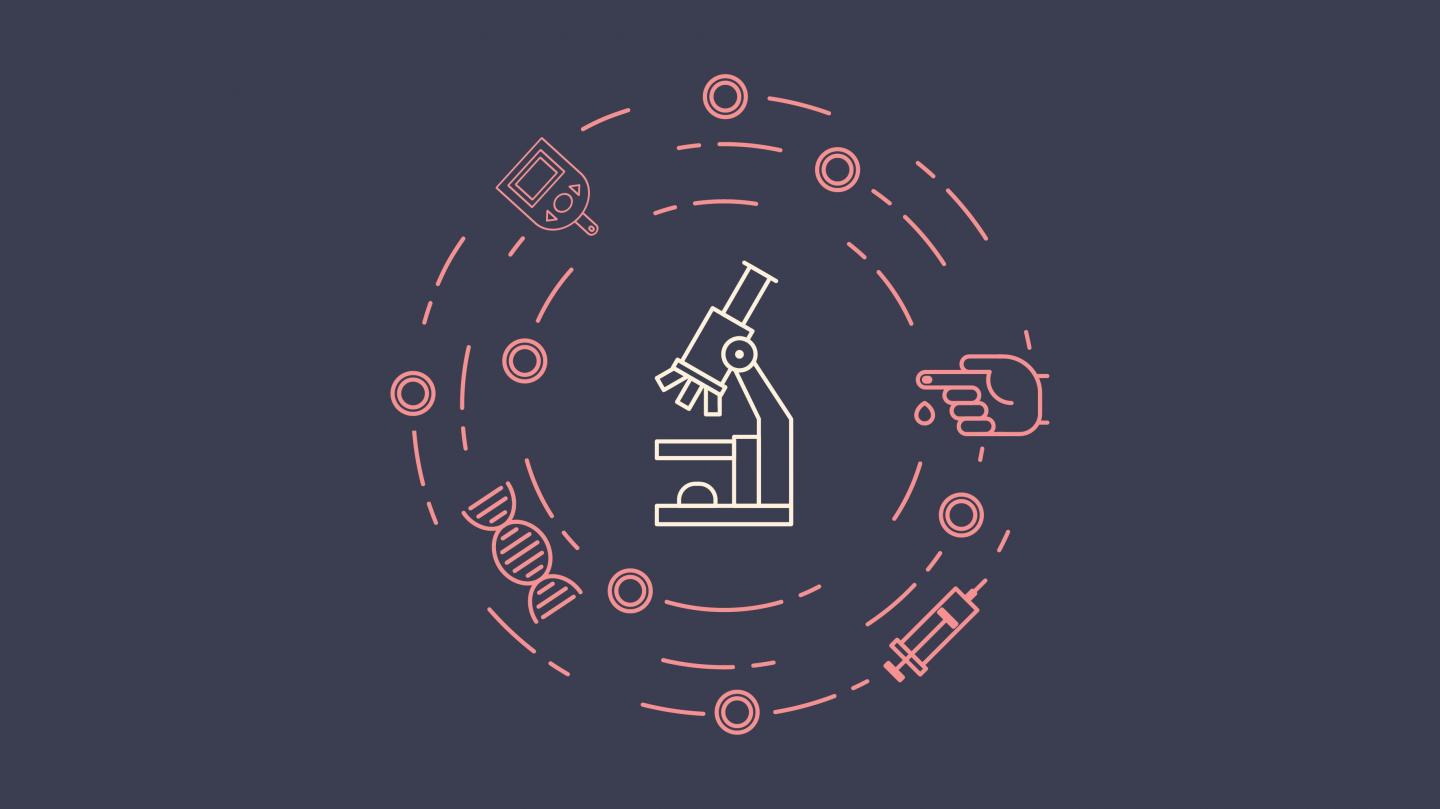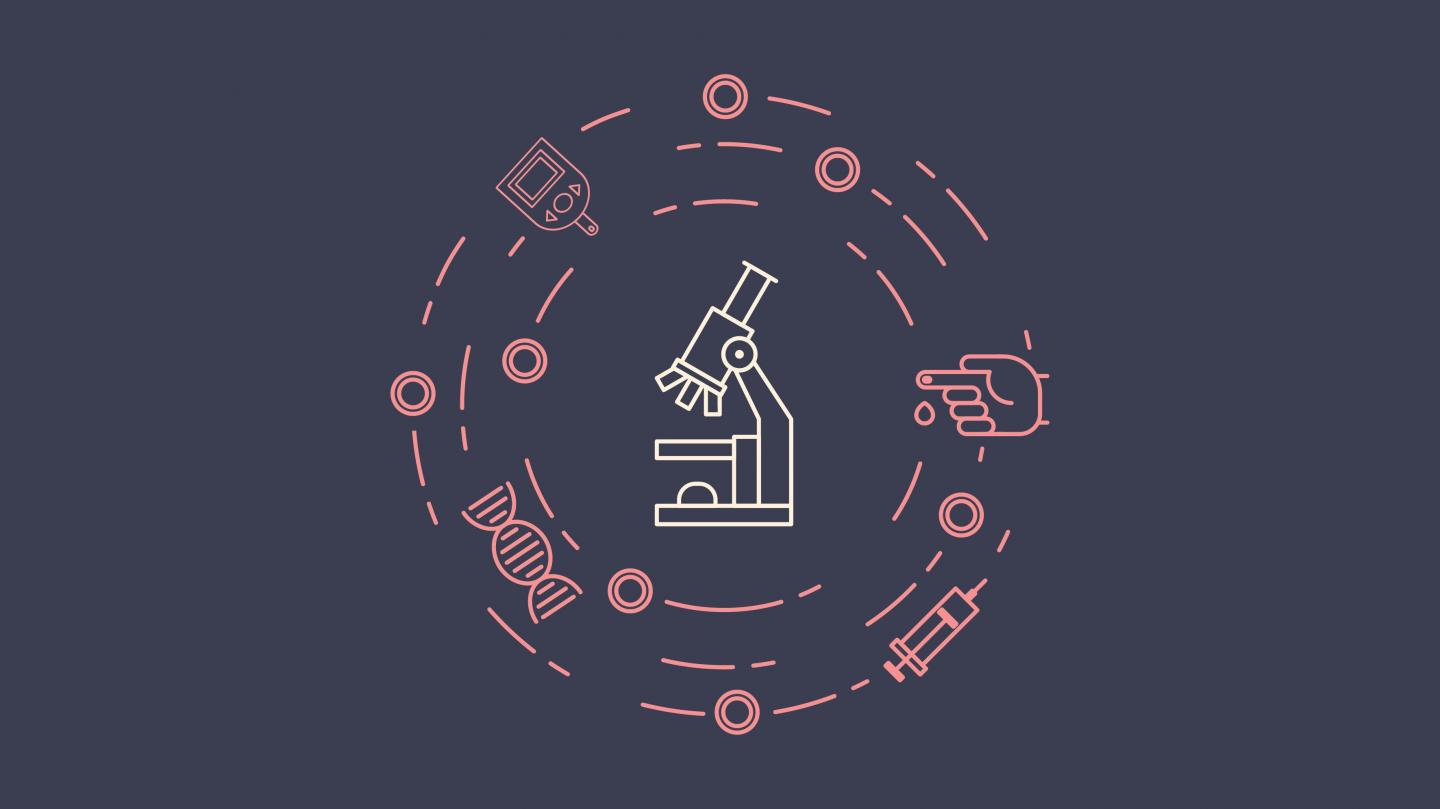
Credit: University of Michigan Health System
ANN ARBOR, Mich. – According to the World Health Organization, 422 million adults across the globe have diabetes. In fact, the number of adults with the disease continues to grow each year.
To help the growing patient population, researchers at the University of Michigan are going down to the molecular level. Here, they're trying to determine what makes cells in the diabetic pancreas less efficient in generating insulin molecules.
Diabetes occurs when the body's pancreas does not produce enough insulin to keep blood sugar levels under control.
"Ten years ago, we found that when insulin is being made in the pancreatic beta cells, a certain subfraction of new synthesized insulin molecules, called proinsulin, cannot fold properly," says Ming Liu, Ph.D., research associate professor of internal medicine at U-M and co-investigator on a new study on the topic.
"This problem is known as proinsulin misfolding, and several different groups around the world have now come up with similar observations. We also found that in animals in which production of misfolded proinsulin molecules reaches 30 percent of total proinsulin, that is enough for these animals to develop diabetes from pancreatic beta cell failure."
A four-member team of U-M faculty are currently zeroing in on misfolded proinsulin.
"When you are born, you receive two copies of the gene encoding proinsulin, one from your mom and one from your dad," says Billy Tsai, Ph.D., co-investigator and professor of cell and developmental biology at U-M. "There is a special kind of diabetes, called Mutant Ins-gene Induced Diabetes of Youth (MIDY), in which the patients with diabetes have a mutation in one of the copies so that as much as half of all of their proinsulin may be misfolded."
Tsai explains that in the pancreatic beta cell, proinsulin first is targeted, or delivered, to the endoplasmic reticulum (ER) compartment, in order to begin the process of making insulin. When proteins are made in the ER, if things go right, they acquire their natural folded three-dimensional shape that is needed in order to function as they should.
If they don't acquire and retain that proper shape, then the cell recognizes them as being defective protein molecules and works to destroy them so that they don't wreak havoc within the cell.
"In the MIDY disease, having that one mutated gene making proinsulin is bad news," Tsai says. "The cell has to figure out a way to recognize the bad protein molecules that come from the mutant gene and destroy them. And if it doesn't, it turns out that misfolded proinsulin can have a "dominant-interfering" effect on the normal bystander proinsulin molecules that are made from the other, good gene."
He adds that the normal proinsulin would ordinarily be made into insulin and that would help to lower blood sugar. But, when the misfolded proinsulin physically attaches itself to the normal bystander proinsulin, that blocks the ability of beta cells to make the normal proinsulin into insulin.
Liu and Tsai are joined in the study by U-M colleagues Peter Arvan, M.D., Ph.D., professor and chief of the Division of Metabolism, Endocrinology & Diabetes, and Ling Qi, Ph.D., professor of molecular and integrative physiology.
The team explains that the pancreatic cells have a way of rectifying the protein misfolding problems. The major way is by recognizing misfolded or damaged proteins and ejecting them from the ER to the cell's proteosome, a major cellular garbage disposal that has the responsibility of chopping up proteins targeted for destruction. That process is called Endoplasmic Reticulum Associated Degradation (ERAD).
The idea is that if misfolded proinsulin is chopped up and degraded, then the remaining normal proinsulin can move through the beta cell and be successfully converted into biologically active insulin, to lower blood sugar.
The team is now researching if there is a way to stimulate the degradative pathway in order to get rid of more of the mutant protein.
"We think we can rectify this diabetic disease by manipulating the ERAD pathway so we can restore normal insulin secretion," says Tsai.
"We're trying to show proof of principle that if we manipulate the cells to have increased ability to degrade misfolded proinsulin, we can increase the amount of normal insulin that can be made and secreted. The hope is this would then help in the development of drugs that would stimulate ERAD to generate the same beneficial effect."
The team explains this type of research has not been reported before in the diabetes field.
"There have been extensive studies on proteins undergoing ERAD," says Qi. "Researchers know that protein misfolding is important for certain diseases, but we're now focusing in on diabetes."
Arvan agrees, "To understand protein misfolding diseases, we have to know more about protein folding. This is an exciting step in the field of diabetes research."
The team has just received a four-year, multi-investigator grant from the National Institutes of Health, from which important new answers are expected.
###
Media Contact
Kylie O'Brien
[email protected]
734-764-2220
@UMHealthSystem
http://www.med.umich.edu
############
Story Source: Materials provided by Scienmag




